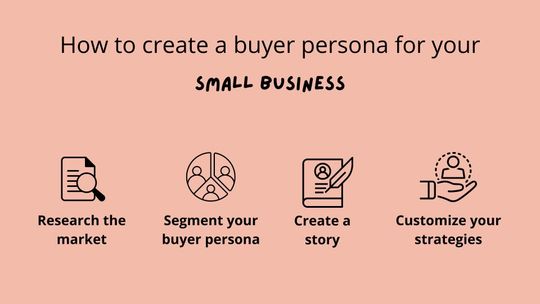

We mentioned in a previous blog the importance of targeting when you develop your marketing plan. The highest level of targeting is knowing your buyer persona.
What’s a buyer persona
Buyer personas are semi-fictional representations of your ideal customers or target audience based on data and research. With a clear picture of who you’re marketing to, it’s much easier to develop qualified prospects, guide product development to suit the needs of your target customers and align all your marketing, sales and services strategies.
Having a defined buyer persona will help you understand your customers, who they are, how they think and speak, and where you can find them. Therefore, you’ll be able to deliver personalized experiences and content to reach your ideal customer better.
Why are they important
Getting a clearer picture of your customers’ thoughts, feelings, concerns, hopes, expectations, plans, and beliefs will help your small business to attract high-value visitors, leads and customers.
Being able to organize your audience segments will strengthen your marketing campaigns and drive content creation, product development, sales follow up and everything related to customer acquisition and retention.
Step-by-step guide
- Research your buyer persona
Ask yourself who is buying from you, who would you like to buy from you, and where ir your competition seeing success.
You can collect this information from your contacts database, ask your sales team for feedback or interview your clients and prospects.
2. Segment your buyer persona
After your research, you’ll have everything you need for creating your buyer persona. Organize all the information and decide how many buyer personas you’ll have. Try to identify patterns and commonalities from the answers to your interview questions, develop at least one primary persona, and share that persona with the rest of the company.
3. Create your buyer persona’s story
Start drafting your buyer persona now you have a good understanding of who your target segments are.
Write a summary including your buyer persona’s name and demographics and psychographics information. But also describe what are their dreams and goals and the obstacles they face to reach those goals and how you can help them.
Once you have that, summarize your client’s story in a paragraph or two. Put the person in context. The story must be a snippet of their day or their life. It has nothing to do with your products or services, it’s all about them.
4. Use your buyer persona to craft customized marketing and sales strategies
Now you know who your buyer personas are, and are familiar with their roles, goals, and challenges, you can develop sales and marketing strategies tailored to just those people who you know are excellent fits for your company.
The process of creating your buyer persona takes time and resources, which as a small business owner you don’t always have. Contact us! We are here to help you strategize, plan and execute.




